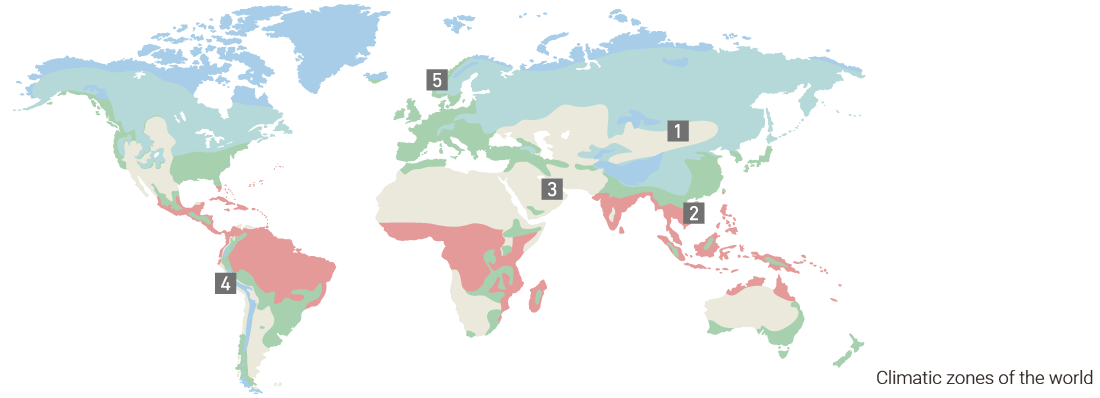01 Humankind's ability to adapt to the environment
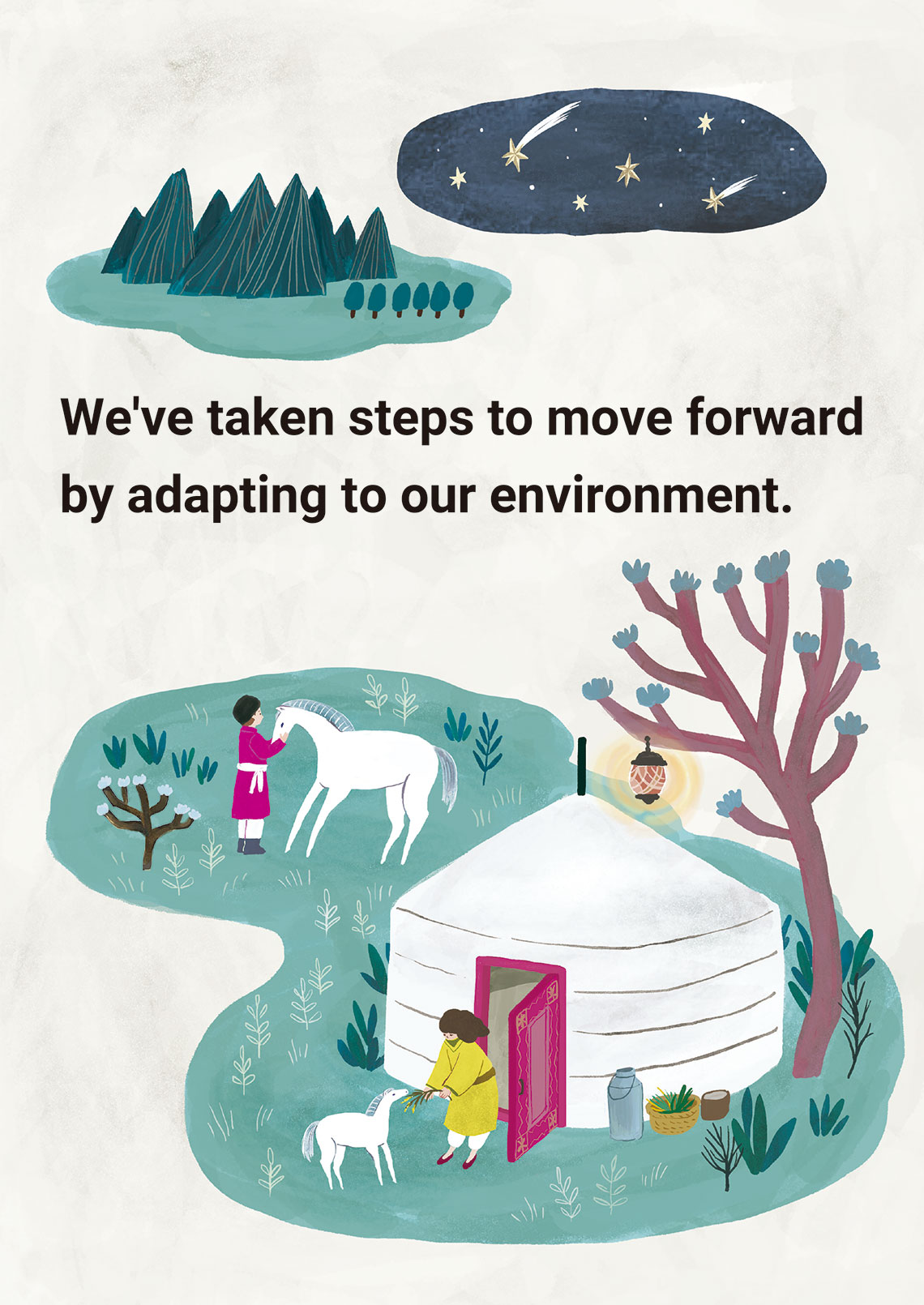
The evolution of humankind. A chronicle of adaptations to changes in the global environment.
It has been approximately 4.6 billion years since the birth of our planet and approximately 2 million years since the emergence of our species. Humanity has made dramatic strides despite our short period on a planetary timescale. It is no exaggeration to suggest that our existence has now become the biggest influence on the global environment. Human prosperity can be attributed to many factors, one of which is our ability to flexibly adapt to global environment changes.
For example, in prehistoric times, humans had to learn how to use tools and fire. An agricultural revolution subsequently occurred that led to stable food production and usher in settled living. Moreover, as agriculture established and populations grew, urbanization made headway and numerous civilizations arose thanks to advancements in irrigation and building technologies. Cities during medieval times underwent economic and cultural development. In modern times, The Industrial Revolution saw radical improvements in production technologies through mechanization. In these ways, humanity has developed by generating knowledge and technologies that enable us to adapt to our fast-paced environment.
Civilization, culture,
and technology all emerged
from our ability to adapt.
In different regions of the world, people live while adapting flexibly to their climate and environment.
Through knowledge and ingenuity, people have been adapting to their climate and environment in areas of clothing, food, and housing. Around the world, there are many examples of superb adaptation to the local environment. As for housing, stilt houses designed to counter humidity and lower indoor room temperatures are found in tropical rainforest regions. We find yurts across the Mongolian steppes, which are portable, easy to set up, and maintain a cozy interior. Regarding clothing, people wear kanduras in the Persian Gulf region to protect the body from the sun during the day. In terms of food, we eat smoked salmon, a preserved food suitable for colder climates.
Such adaptation has allowed humankind to continue progressing and lead prosperous lives. Our ability to adapt to our environment can be described as one of our most important capabilities and assets.
Our ability to adapt to
the environment is
one of humanity's
greatest sources of pride.
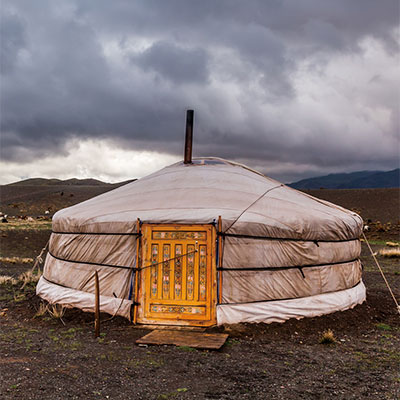
Yurts: housing in Mongolia
Yurts are round portable tents that are used by nomadic tribes in Mongolia. Adapted to the climate and weather conditions in Mongolia, yurts provide a cool environment in summer and a warm one in winter. They are also easy to assemble and transport, making them suitable for the nomadic lifestyle.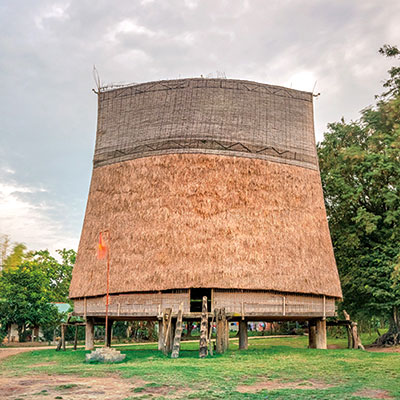
Stilt houses: housing in Vietnam
These Vietnamese houses are traditional dwellings found in mountainous regions and areas prone to floods. By raising the living space above ground level, floodwaters are prevented from entering the home. Vents and draft holes designed in the lower area of the house also reduce the humidity inside.
Kandura: clothing in the UAE
A kandura is a typical traditional article of clothing for men worn in the UAE and other countries in the Persian Gulf region. A kandura is a white robe made from a single piece of breathable cotton or linen. It is highly breathable, and its white color reflects sunlight and minimizes the amount of heat absorbed.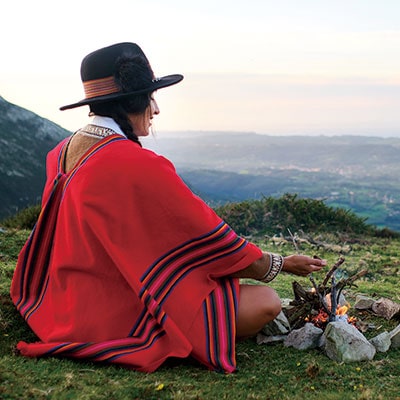
Poncho: clothing item worn in Peru
The Poncho is a typical, traditional item of clothing worn in Peru and other regions of Latin America. This rectangular or square-shaped piece of fabric is slipped over the neck to cover the body. It effectively retains heat, protects from the cold, and is suitable for various activities without restricting body movement.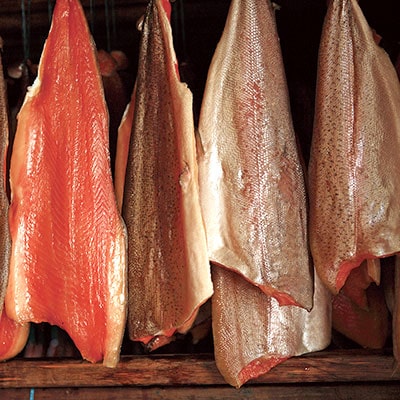
Smoked salmon: food in Norway
Smoked salmon originated in Northern Europe and is made by smoking salmon. Smoking the fish helps maintain its freshness and makes it possible to store it for an extended period of time. The smoke also imparts a rich aroma and taste.